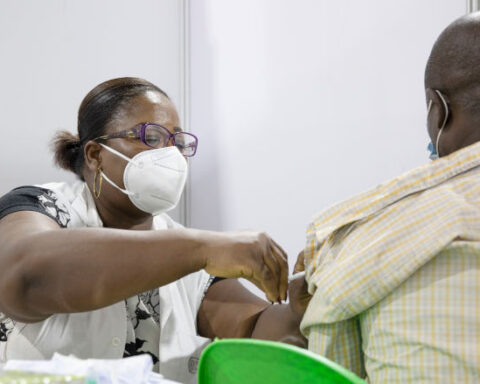However, information is lacking on symptoms that persist after recovery. We assessed persistent symptoms in patients who were discharged from the hospital after recovery from COVID-19 Methods
In the waning phase of the pandemic, beginning on April 21, 2020, the Fondazione Policlinico Universitario Agostino Gemelli IRCCS in Rome, Italy, established a postacute outpatient service for individuals discharged from the hospital after recovery from COVID-19. All patients who met World Health Organization criteria for discontinuation of quarantine (no fever for 3 consecutive days, improvement in other symptoms, and 2 negative test results for severe acute respiratory syndrome coronavirus 2 [SARS-CoV-2] 24 hours apart) were followed up. At enrollment in the study, real-time reverse transcriptase–polymerase chain reaction for SARS-CoV-2 was performed and patients with a negative test result were included.
Patients were offered a comprehensive medical assessment with detailed history and physical examination. Data on all clinical characteristics, including clinical and pharmacological history, lifestyle factors, vaccination status, and body measurements, were collected in a structured electronic data collection system. The COVID-19 postacute outpatient service is currently active, and further details about the patient evaluation protocol are described elsewhere.5
In particular, data on specific symptoms potentially correlated with COVID-19 were obtained using a standardized questionnaire administered at enrollment. Patients were asked to retrospectively recount the presence or absence of symptoms during the acute phase of COVID-19 and whether each symptom persisted at the time of the visit. More than 1 symptom could be reported. The EuroQol visual analog scale was used to ask patients to score their quality of life from 0 (worst imaginable health) to 100 (best imaginable health) before COVID-19 and at the time of the visit. A difference of 10 points defined worsened quality of life. All analyses were performed using R version 3.6.3 (R Foundation).
This study was approved by the Università Cattolica and Fondazione Policlinico Gemelli IRCCS Institutional Ethics Committee. Written informed consent was obtained from all participants.Results
From April 21 to May 29, 2020, 179 patients were potentially eligible for the follow-up post–acute care assessment; 14 individuals (8%) refused to participate and 22 had a positive test result. Thus, 143 patients were included. The mean age was 56.5 (SD, 14.6) years (range, 19-84 years), and 53 (37%) were women. During hospitalization, 72.7% of participants had evidence of interstitial pneumonia. The mean length of hospital stay was 13.5 (SD, 9.7) days; 21 patients (15%) received noninvasive ventilation and 7 patients (5%) received invasive ventilation. The characteristics of the study population are summarized in the Table.
Patients were assessed a mean of 60.3 (SD, 13.6) days after onset of the first COVID-19 symptom; at the time of the evaluation, only 18 (12.6%) were completely free of any COVID-19–related symptom, while 32% had 1 or 2 symptoms and 55% had 3 or more. None of the patients had fever or any signs or symptoms of acute illness. Worsened quality of life was observed among 44.1% of patients. The Figure shows that a high proportion of individuals still reported fatigue (53.1%), dyspnea (43.4%), joint pain, (27.3%) and chest pain (21.7%).Discussion
This study found that in patients who had recovered from COVID-19, 87.4% reported persistence of at least 1 symptom, particularly fatigue and dyspnea. Limitations of the study include the lack of information on symptom history before acute COVID-19 illness and the lack of details on symptom severity. Furthermore, this is a single-center study with a relatively small number of patients and without a control group of patients discharged for other reasons. Patients with community-acquired pneumonia can also have persistent symptoms, suggesting that these findings may not be exclusive to COVID-19.6
Clinicians and researchers have focused on the acute phase of COVID-19, but continued monitoring after discharge for long-lasting effects is needed.






